
It’s August, and it’s punishingly hot, but at least we’ve got peaches. This week we went up to Fritchman Orchards to watch a bit of the peach harvest. As always, it’s humbling to observe just how much work goes into producing the fruits and vegetables we take for granted. At this time of year, harvest starts around six in the morning, so that the majority of the work can be done before the temperature tops 90 degrees.


Experienced pickers harvest peaches by color.
When we tell people on the Front Range that we’re moving to the Western Slope, they invariably ask about peaches. Specifically, they ask about Palisade peaches. And this is not designed to malign Palisade peaches – because they’re spectacular, of course! – but to introduce the concept of branding, and how it can perhaps to be used to confuse a situation, especially when it comes to local food.
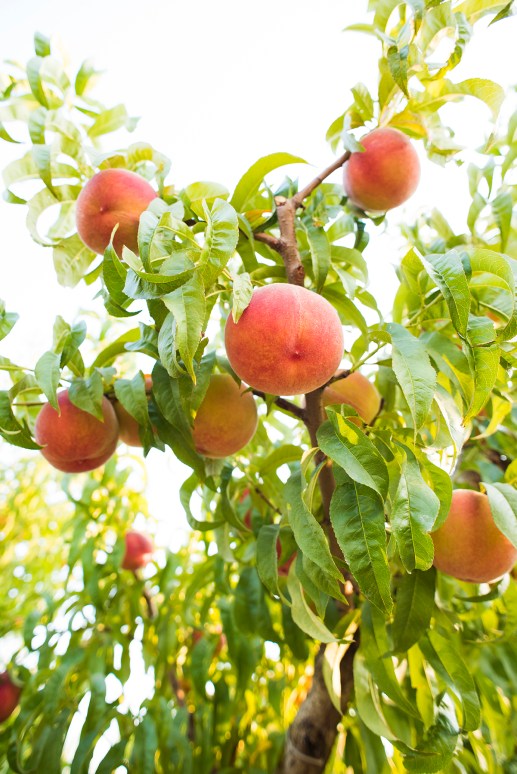
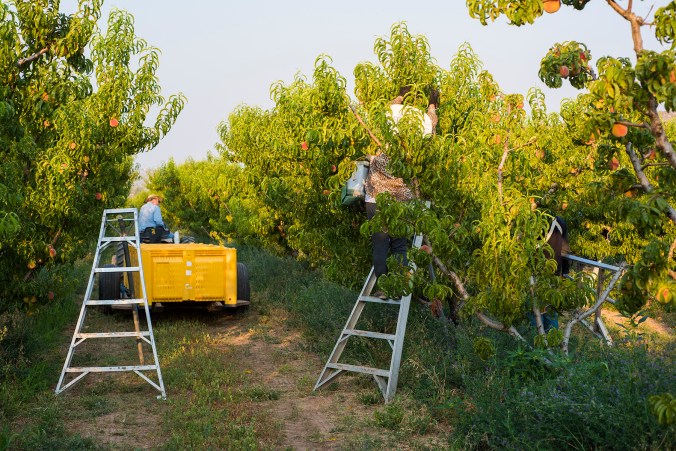
What we mean is that peaches are grown all over Colorado’s Western Slope, not just in Palisade. Palisade, like Olathe sweet corn, has done a wondrous job of branding itself and its fruit, but that branding sometimes overlooks the fact that peaches come from more places than just Palisade. (For the record, Palisade is in Mesa County, and we’re in Delta County – and Delta County has more organic farms than any other county in Colorado. Not to brag, obviously.) Orchard City, near where we’re living, grows tons of luscious peaches each year, but because they don’t bear the Palisade name, they’re often ignored.

Huge fans like these help circulate warm air when the blossoms or fruit are at risk of freezing.
Fritchman Orchards is a fifth-generation fruit-growing operation; they grow peaches, apples, cherries and plums on about one hundred acres on a gorgeous mesa above Cedaredge and Orchard City. Ellis and Darlene took over in 1972; they currently operate the business with their son, daughter-in-law and two grandsons. They proudly sell their fruit to wholesalers as well as at their original packing shed on Highway 65, a beautiful old building filled with carefully curated antiques. Fritchman prides itself on offering only unwaxed fruit; loyal customers drive west from as far away as Denver and Kansas to buy Fritchman fruit. Once you’ve tasted their products, you’ll know why customers make the trip year after year.
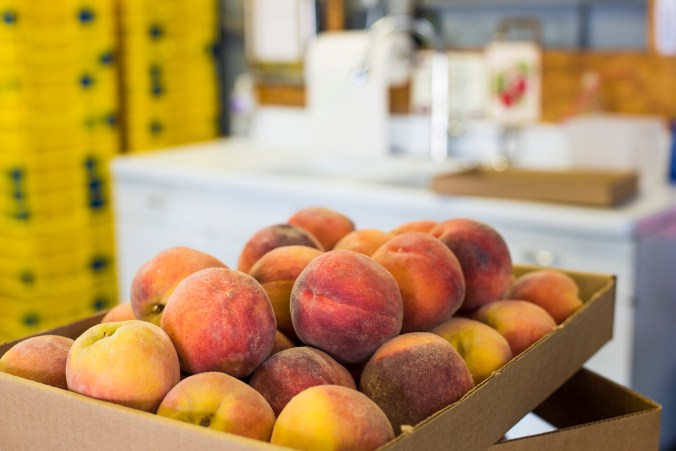
Peach season in Delta County spans from late June through mid-September, depending on weather. This year has been a difficult one for all fruit growers in the area; a pronounced winter drought means that the fruit trees haven’t produced as much as they could during wetter years. Experienced growers know to hedge their bets by growing numerous varieties; Fritchman Orchards grows eight or nine different types of peaches which ripen at different times, including Starfire, Red Globe, Suncrest and many others. Older customers have their favorites for fresh eating, for canning and for pies; your best bet, as always, is to talk to your farmer and get their opinion on what’s best right now. (And please, if you’re buying at the farmers’ market: do not squeeze all the peaches before making your selection. It damages a delicate, fragile fruit.)
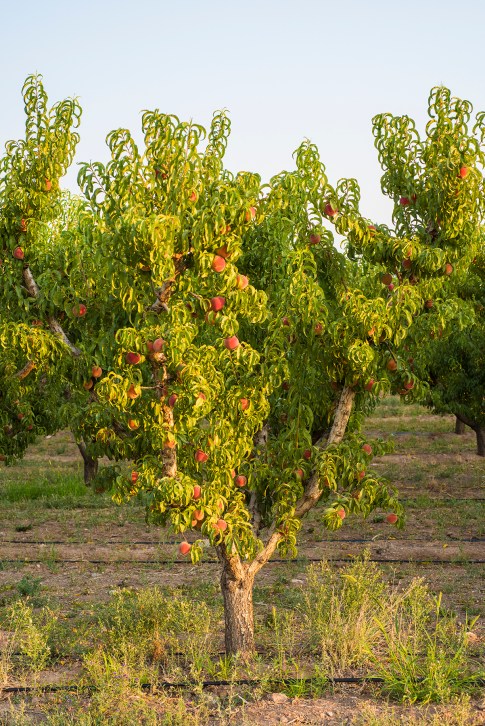
Peach trees have a lifespan of about fifteen to twenty years; once they’re no longer producing regularly, the trees are removed and the orchard is typically turned over to alfalfa. Fritchman is very particular about rotating its orchards, meaning that peach trees never follow peach trees. Good farmers know that careful rotation is key to maintaining healthy crops.

The area we’re relocating to used to be completely covered with fruit orchards; fruit would be packed into horse-drawn carriages and transported to the railway station at Austin. Nowadays most of our fruit comes from California in summer and Mexico in winter, so smaller orchards have become less valuable. Family operations like Fritchman, however, have made a name for themselves by growing superior fruit with an emphasis on flavor rather than portability, and that extra effort makes all the difference.

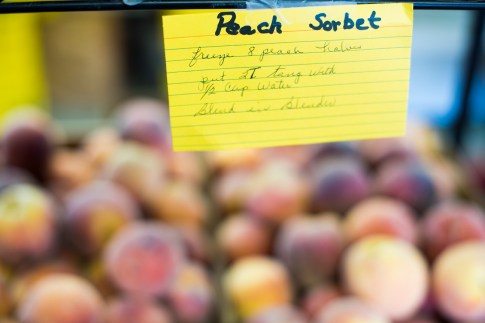
We’ve each eaten at least two or three ripe peaches a day for the past few weeks and we’ll continue to do so until the season ends. If you’re buying peaches on the Front Range, ask where they’re coming from, and remember that Palisade is just one growing area of many in Colorado! If you’d like to taste Fritchman Orchards’ remarkable fruit, you’ll have to make a visit to the Western Slope. We can assure you that it’s worth the trip!
Warmest thanks to Darlene, Ellis, Erik, Shannon and the Fritchman crew for graciously hosting our visit to their orchards and fruit shed. We’re glad to know you!
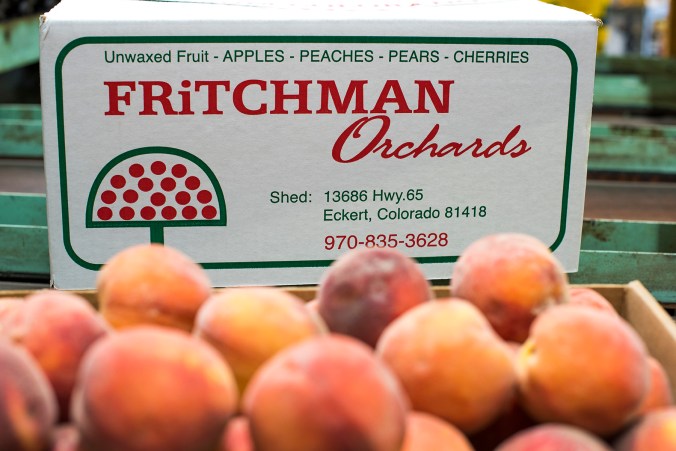
That is quite a stretch, between June and September! Is that partly because of late fruiting cultivars? Ours finish by July. It would be excellent to get peaches a month later! The single backyard tree has been in bad condition for years, but is still very productive. I have been trying to layer stems for years, but someone always pulls them up. The tree was planted in 1985!
LikeLike
Have a peach cobbler in the oven right now, just about to come out. I still have to get a box or two to can for the year. Thanks for the pictures N!!
LikeLike
Jim, I know canning won’t happen this year for me, but I really hope I can at least get some peaches frozen before the season ends!
LikeLike
Pingback: The Farm Series: Western Culture | Finding Quiet Farm
Pingback: The cranes are here! | Finding Quiet Farm
Pingback: The Farm Series: I-Guana Farm | Finding Quiet Farm
Pingback: Farm update: January 6 | Finding Quiet Farm